Any goods, whether it is exported or imported, whether it wants to enter the country or exit, must pass through the customs of the country. The customs process is to ensure that trade and transportation are carried out within the framework of the laws and regulations of each country. The processes that are carried out to control the entry and exit of goods from the borders of the country are called customs clearance. If you do not carry out the clearance process, your imported or exported goods are known as smuggling goods.
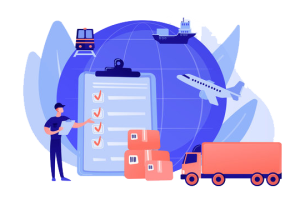
For clearance of your goods from customs you must deliver all the documents related to your goods from the time of purchase and order registration to warehousing in customs warehouses at the appointed time. After delivery of the required documents, customs declaration is adjusted. Another important item is the payment of customs fees, which must be paid by the owner of the goods or his legal representative when clearing the goods.
Customs broker
The customs clearance process is rather complicated and is not possible without the necessary information. This process requires detailed knowledge of customs laws. Laws that strongly follow the political situation in the country and inevitably change with the situation, the imposition of sanctions and…
The best thing you can do in this case is get help from a customs broker. customs broker is in fact a masterful person with customs affairs and can complete all the process of departure of goods from customs without any problems in the shortest possible time and with the lowest cost.
Withdrawal of goods from customs in the fastest possible time and delivery at the appointed time has always been one of the most important concerns of businessmen. Because after this stage the final price can be calculated. Therefore, having sufficient information about customs procedures both in your own country and in other countries is very important. So, getting help from a customs broker that is well known with all these processes can be a great help to exporters of goods.
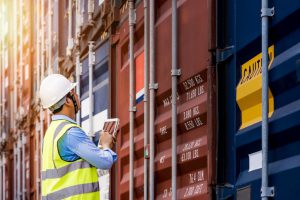
Customs regulation
One of the most important steps to exit the goods from Customs is to obtain the required regulations for the goods, which must be obtained from the relevant organizations. Some goods for clearance will need to obtain a license from the Environment Organization, some goods for clearance need to obtain a license from the organization of culture and Islamic Guidance, and others for clearance need to obtain a license from the organization of industry and agriculture, some goods for clearance need to obtain a license from the organization of narcotics control and….In order to find out which organizations permits you need, you must study the submitted circulars or consult an expert customs broker to avoid the problems, you might face during customs clearance.
Customs clearance steps
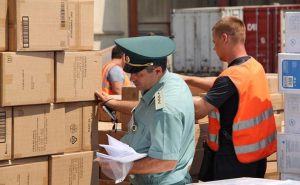
Declaration:
For customs clearance, a declaration is required to be drawn up and given to customs. Since customs does not know the specifications and features of your goods, so you are obliged to accurately introduce your goods to customs. To fill in the declaration both physically and electronically you need documents such as warehouse receipt, commercial card, commercial invoice, proforma, certificate of origin, delivery order, packing list, bill of lading, cargo insurance, certificate of inception and required permits for goods such as: health license.
Cottage
After registering your declaration in the EPL system, the system immediately locks the declaration. Once locked, a dedicated number will be assigned to your declaration. This number, which is unique for each statement, is called the Cottage number or the declaration number. With the cottage number, you can completely track customs clearance steps from the moment of arrival at customs until the moment of clearance.
customs clearance routes

Goods that are in customs after inspection fall on one of green, yellow or red routes:
Green route: If the inspectors find the accuracy and compliance of your information with the goods during the inspection of the goods and related documents, they will choose the green route to withdrawal your goods, which means that the goods comply with the information recorded in the declaration and the goods can be discharged after payment of customs duties and charges.
Yellow route: When inspectors notice that there is little evidence or inconsistency in the documents presented and the goods discharged, they choose the yellow route to withdrawal the goods from the customs in your case, and the choice of the yellow route means re-inspecting the documents by the customs service, as well as re-evaluating the valuation and then referring to the fund.
Red route: When the inspectors are inspecting your goods, if they notice that there is little or no required evidence to withdrawal from the customs, they will choose the red route in your case. When the red route is chosen for your discharge file, it means that the evaluation and control of the goods must be physically carried out by customs inspectors and then obtain the necessary permits to withdrawal the goods from the customs. The reevaluation circle should determine the value of your goods and the documents will be checked by the customs service; After doing all this, you can refer your case to the fund and pay the fees to withdrawal the goods from the customs.
Customs valuation
The customs valuation is intended to determine whether the product is commercial or non-commercial, as well as to determine the amount of tax-related expenses, which must be mentioned in a precise and specific way.
In general, the valuation process implies the calculation of all costs imposed until the moment of entry of goods into customs. The customs valuation is in accordance with the customs laws of each country. There are a series of rules, including the compliance of goods with the list of allowed imported and exported goods. Every country has a certain set of rules for trade that must comply well with these laws because if they want to import goods contrary to the laws of the country, the clearance permit is not registered by the customs and the valuation of the goods is not carried out.
To value the goods, various documents must be checked including Certificate of origin and Purchase invoice that the purchase amount is listed in it. These two documents are the most important. The next thing to consider in the valuation process is customs tariffs. Iran offers specific tariffs for each good to Customs, and the valuation of goods must be based on these tariffs. Customs already has a database of the value of all kinds of goods in its system, where you can search for the value of your goods. TSC system is prepared to search for the valuation of goods. Experts check the goods and comply them with the documents you presented and sign them in case of no problem.
Payment to the fund:
At this stage, the owner of the goods must pay the costs established by customs experts. After paying the fees and receiving the payment slip, customs issue the LEO to him.

Let Export Order (LEO)
The LEO is a document issued at the Customs and means that the valuation operation has ended, and the owner of the goods has settled with the Customs and can plan for the departure of his goods from the customs.
Warehousing and loading permission
After the issuance of documents for the departure of goods from Customs and payment of customs fees, the warehouse receipt and the loading permit from the customs warehouses and its documents will be provided. At this time, the storage fee must be paid. Warehousing cost in different customs is calculated differently and the costs related to unloading, loading, insurance, the duration of the deposition of goods in the warehouse etc. include that these items are also calculated according to the volume, type and value of the goods.
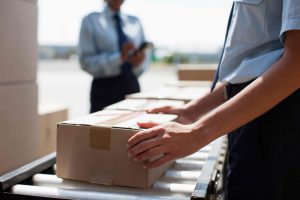
Exit Permission
After all the above steps, the owner of goods or his legal representative can receive Exit Permission from the customs warehouse. In fact, it can be said that after the customs warehouser checked the LEO and the exit stamp on the Exit Permission, the owner of the goods or clearance broker can enter the vehicle for transportation of goods to customs` warehouse and start the process of loading.
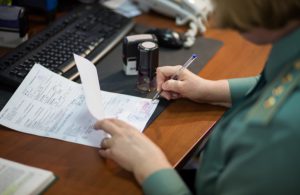
Duration allowed for storing goods in customs warehouses
According to Iran`s customs laws, the time limit of the storage of goods in customs warehouses is 3 months from the date of delivery of the goods. In the case of written request of the owner of the goods and stating the reason justified at customs diagnosis and by paying the warehousing fee until the date the Customs has agreed with the time limit can be extended up to 2 more months. If the owner of the goods does not perform customs formalities and payment of belongings, the goods are subject to abandoned goods.